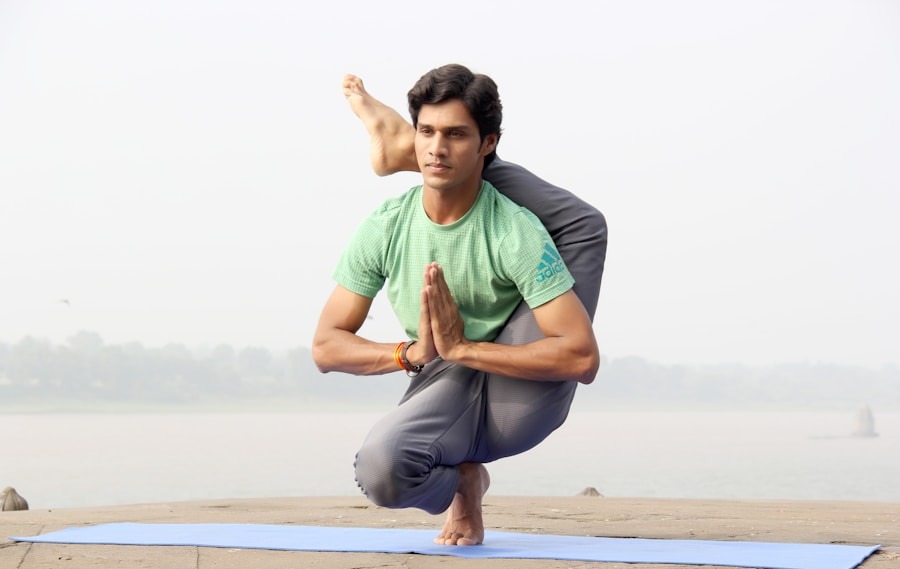Patanjali, a revered sage in ancient India, is often credited with systematizing the philosophy and practice of yoga through his seminal work, the Yoga Sutras. While the exact dates of his life remain uncertain, scholars generally place him around the 2nd century BCE. His contributions to yoga are profound, as he synthesized various existing practices and philosophies into a coherent framework that has influenced countless generations.
Among the many forms of yoga he discussed, Karma Yoga stands out as a vital path that emphasizes selfless action and duty. Karma Yoga, as articulated by Patanjali, is rooted in the broader context of Hindu philosophy, particularly the concepts of dharma (duty) and karma (action). The essence of Karma Yoga lies in performing one’s duties without attachment to the fruits of those actions.
This principle is not merely about performing good deeds; it is about cultivating an attitude of detachment and selflessness in all endeavors. Patanjali’s teachings encourage practitioners to engage fully in their responsibilities while maintaining a sense of inner peace and equanimity, regardless of the outcomes. This approach to action is not only practical but also deeply spiritual, as it aligns individual actions with a higher purpose.
Key Takeaways
- Patanjali is the ancient sage credited with compiling the Yoga Sutras, which include the principles of Karma Yoga.
- Karma Yoga is the path of selfless action, where individuals act without attachment to the results of their actions.
- Practicing Karma Yoga involves following principles such as performing duties without selfish motives and surrendering the fruits of one’s actions to a higher power.
- The benefits of Karma Yoga include reducing selfish desires, cultivating a sense of inner peace, and experiencing a deeper connection with others and the world.
- Integrating Karma Yoga into your yoga practice can be done by focusing on serving others, practicing mindfulness, and dedicating your practice to a higher purpose.
Understanding Karma Yoga: The Path of Selfless Action
The Power of Selfless Action
This path encourages individuals to act not for personal gain but for the benefit of others, fostering a sense of community and interconnectedness. The philosophy behind Karma Yoga is deeply intertwined with the idea of surrendering the ego.
Transcending the Cycle of Attachment
When individuals act out of a desire for recognition or reward, they become entangled in a cycle of attachment and suffering. Karma Yoga invites practitioners to transcend this cycle by dedicating their actions to a higher purpose, whether that be service to humanity, devotion to God, or simply fulfilling one’s responsibilities with integrity.
Finding Joy in Giving
This shift in perspective can lead to profound inner peace and fulfillment, as individuals learn to find joy in the act of giving rather than in receiving.
The Principles of Karma Yoga: How to Practice Selfless Action in Daily Life

Practicing Karma Yoga involves several key principles that can be integrated into daily life. One fundamental aspect is the cultivation of mindfulness in every action. This means being fully present and aware while performing tasks, whether mundane or significant.
By focusing on the process rather than the outcome, individuals can develop a deeper appreciation for their actions and their impact on others. For instance, when cooking a meal for family or friends, one can approach the task with love and attention, transforming it into an act of service rather than a chore. Another essential principle is the practice of non-attachment.
This does not imply a lack of care or commitment; rather, it encourages individuals to engage wholeheartedly in their actions while letting go of expectations regarding results. For example, a teacher may dedicate themselves to imparting knowledge to their students without being overly concerned about their performance on exams. By focusing on the effort rather than the outcome, teachers can foster a more enriching learning environment that benefits everyone involved.
Additionally, selfless action can be practiced through acts of kindness and service within one’s community. Volunteering at local shelters, participating in environmental clean-up efforts, or simply offering support to a neighbor in need are all expressions of Karma Yoga. These actions not only contribute positively to society but also cultivate a sense of connection and purpose within the practitioner.
The Benefits of Practicing Karma Yoga: How it Can Transform Your Life
The practice of Karma Yoga offers numerous benefits that extend beyond individual well-being. One significant advantage is the development of resilience in the face of challenges. When individuals learn to detach from outcomes and focus on their efforts, they become less susceptible to disappointment and frustration.
This resilience fosters a more positive outlook on life, enabling practitioners to navigate difficulties with grace and composure. Moreover, engaging in selfless action can lead to enhanced relationships with others. As individuals practice kindness and service, they cultivate empathy and compassion, which are essential for building strong connections.
This sense of community not only enriches personal lives but also contributes to a more harmonious society. The ripple effect of selfless actions can inspire others to adopt similar practices, creating a collective shift towards greater altruism and cooperation.
By aligning actions with a higher purpose, practitioners often find themselves more attuned to their inner selves and their place in the universe. This journey inward can lead to greater clarity about one’s values and priorities, ultimately guiding individuals toward a more meaningful existence. The transformative power of Karma Yoga lies in its ability to shift perspectives from self-centeredness to selflessness, fostering a profound sense of fulfillment and connection.
Integrating Karma Yoga into Your Yoga Practice: Tips and Techniques
Incorporating Karma Yoga into an existing yoga practice can enhance both physical and spiritual dimensions. One effective technique is to set intentions before each practice session. By dedicating the practice to a specific cause or person, practitioners can infuse their movements with purpose and meaning.
For instance, one might dedicate their practice to someone facing challenges or to a cause they are passionate about, allowing each pose and breath to become an offering.
Instead of rushing through sequences, practitioners can take time to reflect on their intentions and the impact of their practice on themselves and others.
This mindfulness can transform even the most routine aspects of yoga into opportunities for selfless action. For example, while transitioning from Downward Dog to Warrior I, one might visualize sending positive energy toward those in need or dedicating strength to support others. Additionally, incorporating acts of service into one’s yoga community can further embody the principles of Karma Yoga.
Organizing charity events or community classes where proceeds go toward local initiatives can create a sense of shared purpose among practitioners. These collective efforts not only strengthen bonds within the community but also amplify the impact of individual actions.
Exploring Other Types of Yoga: How Karma Yoga Differs from Hatha, Vinyasa, and other Yoga Styles

Vinyasa and Bhakti Yoga: A Focus on Fitness and Devotion
Vinyasa Yoga introduces a dynamic flow between poses, emphasizing breath synchronization with movement. While Vinyasa can be an exhilarating practice that promotes physical fitness and mindfulness, it may not explicitly address the principles of selflessness inherent in Karma Yoga. Practitioners may become focused on achieving specific postures or sequences rather than cultivating an attitude of service or detachment from outcomes. Other styles like Bhakti Yoga focus on devotion and love for God or a higher power through chanting and prayer. While Bhakti shares some common ground with Karma Yoga in terms of surrendering ego and dedicating actions to a higher purpose, it diverges in its emphasis on emotional devotion rather than action-oriented service.
Karma Yoga: A Unique Path to Holistic Well-being
In contrast, Karma Yoga stands apart by integrating action with ethical considerations and selflessness at its core. It invites practitioners to engage actively with the world while maintaining an inner sense of peace and purpose. By understanding these distinctions among various yoga styles, individuals can choose practices that resonate with their personal goals while also exploring how different paths can complement one another on their journey toward holistic well-being.
If you are interested in exploring different philosophical concepts beyond yoga, you may want to read about Many-Valued Logic. This article provides an introduction to the historical development, relations, and applications of many-valued logic, offering a deeper understanding of this complex subject. By delving into topics such as Nyaya and Vaiseṣika, you can also gain insights into other ancient Indian philosophical traditions. Additionally, understanding the role of pressure groups in addressing societal issues can provide a broader perspective on how different belief systems and practices intersect with the world around us. Explore more here.
FAQs
What is Patanjali and Karma Yoga?
Patanjali is an ancient sage who is often credited with compiling the Yoga Sutras, a collection of aphorisms that form the foundation of classical yoga philosophy. Karma Yoga is one of the four paths of yoga outlined in the Yoga Sutras, focusing on selfless action and the performance of duty without attachment to the results.
What are the other paths of yoga according to the Yoga Sutras?
In addition to Karma Yoga, the other paths of yoga outlined in the Yoga Sutras are Bhakti Yoga (the path of devotion), Jnana Yoga (the path of knowledge), and Raja Yoga (the path of meditation and self-discipline).
How does Karma Yoga differ from other types of yoga?
Karma Yoga differs from other types of yoga in its emphasis on selfless action and the performance of duty without attachment to the results. While other types of yoga may focus on devotion, knowledge, or meditation, Karma Yoga is specifically centered on the concept of acting without selfish motives.
What are the key principles of Karma Yoga?
The key principles of Karma Yoga include performing one’s duty without attachment to the results, acting selflessly for the benefit of others, and maintaining a sense of equanimity in success and failure.
How can one practice Karma Yoga in daily life?
Practicing Karma Yoga in daily life involves performing one’s duties and responsibilities with a selfless attitude, offering the results of one’s actions to a higher power or to the benefit of others, and cultivating a mindset of detachment from the outcomes of one’s efforts.






















+ There are no comments
Add yours